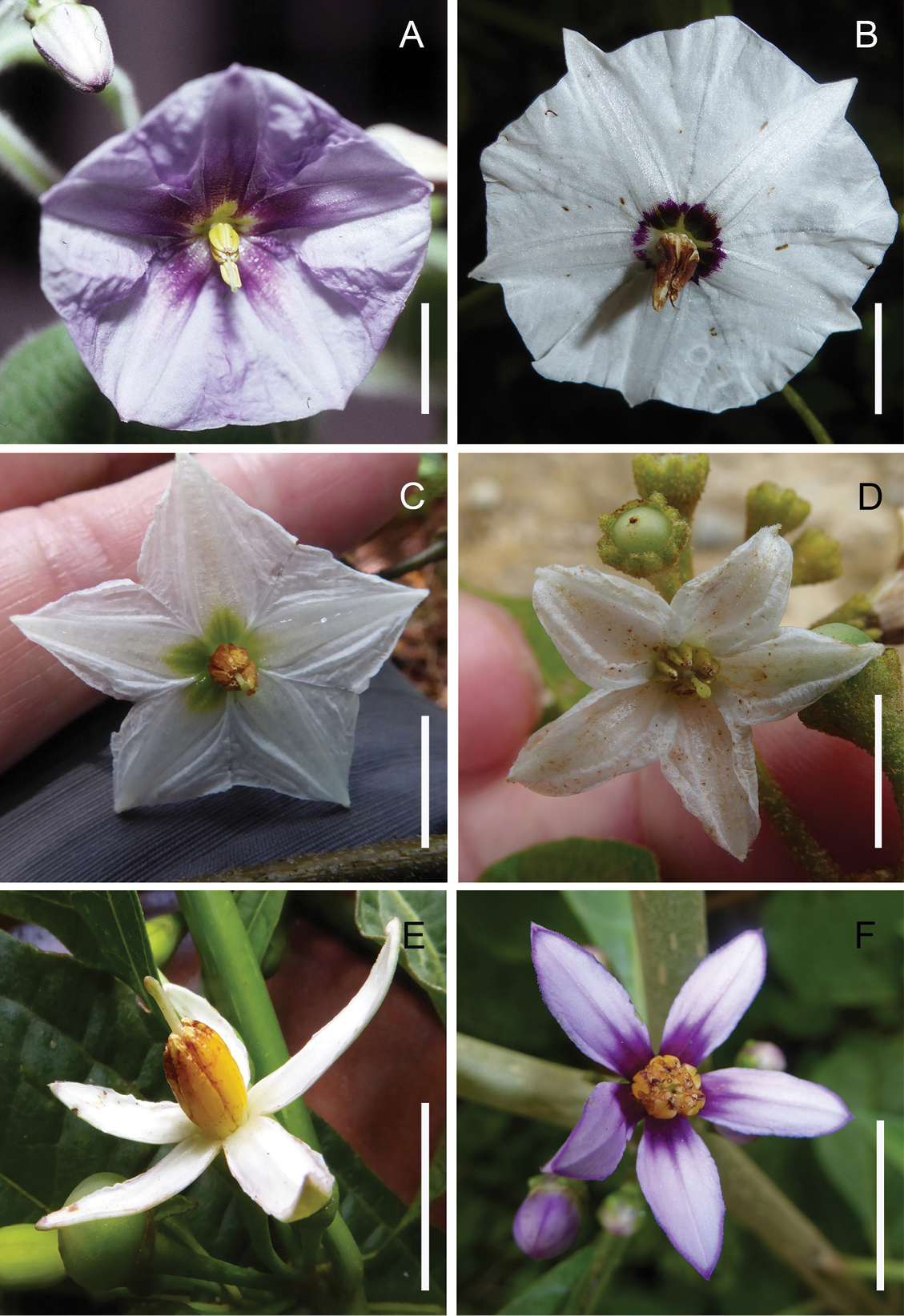
|
||
|
Lycianthes corollas and stamens A flower of L. pringlei with corolla slightly campanulate to rotate in orientation, entire in outline, abundant interpetalar tissue, and green markings at the base of the lobes, the stamens unequal and free; field photo of Dean 327 (DAV) B flower of L. connata with corolla rotate in orientation, very shallowly stellate in outline, abundant interpetalar tissue (with the lobes protruding beyond the tissue), and purple markings at the base of the lobes, the stamens unequal and free; field photo of Dean 9530 (DAV) C flower of L. chiapensis (Brandeg.) Standl. var. sparsistellata Standl. & Steyerm. with corolla rotate in orientation, shallowly-stellate in outline, abundant interpetalar tissue, and green markings at the base of the lobes, the stamens unequal and free; field photo of Dean 9507 (DAV) D flower of L. sideroxyloides with corolla slightly campanulate to rotate in orientation, stellate in outline, and interpetalar tissue connecting just the lower portions of the lobes, the stamens equal and free; field photo of Dean 9512 (DAV) E flower of L. heteroclita with corolla slightly campanulate to rotate in orientation, deeply-stellate in outline, and no interpetalar tissue, the stamens equal with partially connate anthers; field photo of Dean 9500 (DAV) F flower of L. ceratocalycia (Donn.Sm.) Bitter with corolla rotate in orientation, deeply-stellate in outline, sparse interpetalar tissue at edges of lobes, and purple markings at the base of the lobes, the stamens equal and free; field photo of Dean 9532 (DAV). Scale bars: 1 cm. |